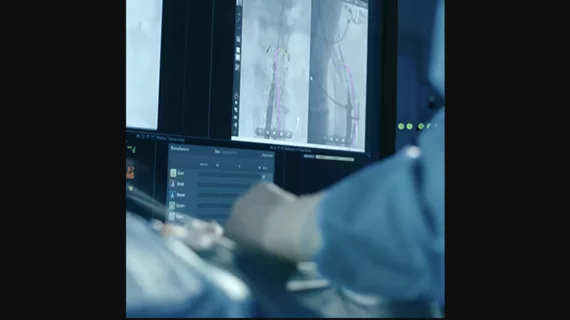FDA approves longer LumiGuide 3D navigation wire from Philips
Philips Healthcare has received U.S. Food and Drug Administration (FDA) approval for its new 160-cm LumiGuide endovascular navigation wire, which uses the company’s popular Fiber Optic RealShape (FORS) technology to deliver real-time 3D visualization without the use of X-rays. Philips already sells as 120-cm version of the FORS-powered device.
The newly approved device was designed to help care teams see devices in 3D and color during complex interventional procedures such as aortic repairs. According to Philips, it allows interventional specialists experience the benefits of 3D visualization with more catheters.
“LumiGuide unlocks the color visualization of wires, catheters, and patient anatomies in 3D from any angle, including simultaneous angles to generate ‘virtual biplane’ images,” Atul Gupta, MD, chief medical officer for diagnosis and treatment at Philips, said in a statement. “Combined with device navigation viewed from angles physically unachievable using conventional C-arm systems, it has already been shown to improve workflows, reduce procedure times and decrease patient and staff radiation dose.”
Philips celebrates a FORS milestone
Philips also revealed that 1,000 patients have now been treated with its FORS technology. An aortic aneurism repair performed by Carlos Timaran, MD, a vascular surgeon with UT Southwestern Medical Center, represented patient No. 1,000—and Timaran used the 160-cm LumiGuide device during the procedure.
“As the first to use this guidewire for a complex aortic repair, I experienced firsthand its potential to revolutionize how we approach minimally invasive vascular interventions,” Timaran said. “The patient who underwent this groundbreaking procedure is doing well, further validating the efficacy of this innovative technology.”
According to one analysis published in the Journal of Vascular Surgery in 2023, endovascular aortic repair (EVAR) procedures guided by FORS were faster and associated with a reduced radiation dose.[1]
“FORS is a novel endovascular guidance technology that aims to reduce radiation usage and mitigate the complexity of endovascular interventions,” the study’s authors wrote at the time. “Our initial experience has demonstrated acceptable technical success with FORS guidance for target vessel cannulation in complex EVAR. As expected, the vessel disease burden and target vessel selected were predictive of cannulation technical success.”

